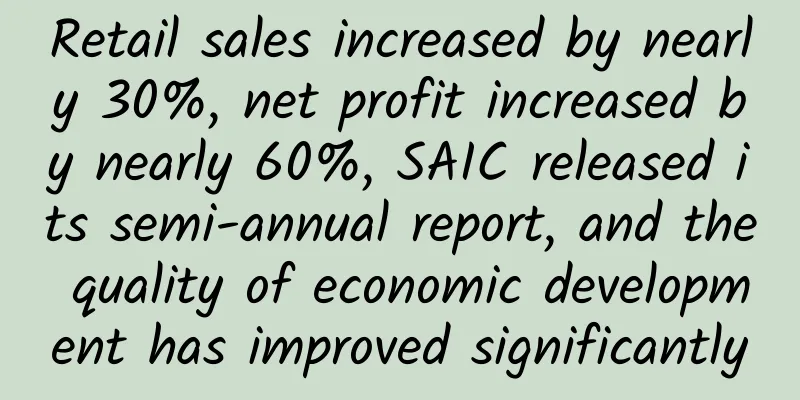|
For those who have just started SEO website optimization, we often see some website page errors, such as: 404, 400, 500, 501 and other status codes. Many times we are confused. What does this mean? What are the common http status codes? In view of this, Dongguan SEO website optimization editor Feng Chao has compiled some for you. Let’s take a look with editor Feng Chao! What are the common http status codes? 1xx (Provisional Response)
A status code that indicates a provisional response and requires the requester to continue the operation.
100 (Continue) The requester should continue with the request. The server returns this code to indicate that it has received the first part of the request and is waiting for the rest.
101 (Switching Protocol) The requester has asked the server to switch protocols, and the server has confirmed and is ready to switch. 2xx (Successful)
Status code indicating that the request was successfully processed.
200 (Successful): The server successfully processed the request. Typically, this means that the server provided the requested web page. If this status code is displayed for your robots.txt file, it means that Baiduspider has successfully retrieved the file.
201 (Created): The request was successful and the server created a new resource.
202 (Accepted): The server has accepted the request but has not yet processed it.
203 (Unauthorized Message): The server has successfully processed the request, but the information returned may have come from another origin.
204 (No Content): The server successfully processed the request but did not return any content.
205 (Reset Content): The server successfully processed the request but did not return any content. Unlike the 204 response, this response requires the requester to reset the document view (for example, clear the form contents to enter new content).
206 (Partial Content): The server successfully processed part of the GET request. 3xx (Redirection)
Further action is required to complete the request. Typically, these status codes are used for redirection. Baidu recommends that you use no more than 5 redirects per request. You can use Webmaster Tools to see if Baiduspider has problems crawling redirected pages. The Web Crawl page under Diagnostics lists URLs that Baiduspider could not crawl due to redirect errors.
300 (Multiple Choices): The server can perform multiple actions in response to the request. The server can select an operation based on the requester (user agent) or provide a list of operations for the requester to choose from.
301 (Moved Permanently): The requested page has been permanently moved to a new location. When the server returns this response (to a GET or HEAD request), it automatically forwards the requester to the new location. You should use this code to tell Baiduspider that a page or website has been permanently moved to a new location.
302 (Temporary Move): The server is currently responding to requests from a web page in a different location, but the requester should continue to use the original location for future requests. This code is similar to the 301 code in response to GET and HEAD requests, and automatically forwards the requester to a different location, but you should not use this code to tell Baiduspider that a page or site has moved because Googlebot will continue to crawl and index the original location.
303 (See Other Locations): The server returns this code when the requester should use a separate GET request to a different location to retrieve the response. For all requests except HEAD, the server automatically forwards to another location.
304 (Not Modified): The requested web page has not been modified since the last request. When the server returns this response, no web page content is returned.
305 (Use Proxy): The requester can only access the requested web page using a proxy. If the server returns this response, it also indicates that the requester should use a proxy.
307 (Temporary Redirect): The server is currently responding to requests from a web page at a different location, but the requester should continue to use the original location for future requests. 4xx (Bad Request)
These status codes indicate that something might have gone wrong with the request, preventing the server from processing it.
400 (Bad Request): The server did not understand the syntax of the request.
401 (Unauthorized): The request requires authentication. The server may return this response for a web page requested after logging in.
403 (Forbidden): The server rejected the request. If you see this status code when Googlebot tries to crawl a valid page on your site (you can see this on the Web Crawl page under Diagnostics in Baidu Webmaster Tools), it's possible that your server or host is denying Baiduspider access.
404 (Not Found): The server cannot find the requested webpage. For example, this code is often returned for a web page that does not exist on the server.
405 (Method Forbidden): The method specified in the request is forbidden.
406 (Not Acceptable): The requested web page cannot be responded to with the requested content characteristics.
407 (Proxy Authorization Required): This status code is similar to <a href=answer.py?answer=35128>401 (Unauthorized)</a>, but specifies that the requester should authorize the use of a proxy. If the server returns this response, it also indicates that the requester should use a proxy.
408 (Request Timeout): The server timed out while waiting for the request.
409 (Conflict): The server encountered a conflict while fulfilling the request. The server MUST include information about the conflict in its response. A server may return this code in response to a PUT request that conflicts with a previous request, along with a list of the differences between the two requests.
410 (Deleted): If the requested resource has been permanently deleted, the server returns this response. This code is similar to the 404 (Not Found) code, but is sometimes used instead of a 404 code when a resource previously existed and no longer exists. If the resource has been permanently moved, you should use 301 to specify the resource's new location.
411 (Valid Length Required): The server did not accept a request without a valid Content-Length header field.
412 (Precondition Failed): The server did not meet one of the preconditions set by the requester in the request.
413 (Request Entity Too Large): The server cannot process the request because the request entity is too large for the server to handle.
414 (Requested URI Too Long): The requested URI (usually a URL) is too long for the server to process.
415 (Unsupported Media Type): The requested format is not supported by the requested page.
416 (Requested Range Not Qualified): If the page cannot provide the requested range, the server returns this status code.
417 (Expectation Not Met): The server did not meet the requirements of an Expect request header field. 5xx (Server Error)
These status codes indicate that an internal error occurred on the server while processing the request. These errors may be errors with the server itself, rather than errors with the request.
500 (Internal Server Error): The server encountered an error and could not complete the request.
501 (Not Implemented): The server does not have the functionality to complete the request. For example, the server might return this code if it does not recognize the request method.
502 (Bad Gateway): The server, while acting as a gateway or proxy, received an invalid response from an upstream server.
503 (Service Unavailable): The server is currently unavailable (either because it is overloaded or down for maintenance). Usually, this is only a temporary condition.
504 (Gateway Timeout): The server was acting as a gateway or proxy, but did not receive the request from the upstream server in a timely manner.
505 (Unsupported HTTP Version): The server does not support the HTTP protocol version used in the request. People who read this article also read: What is a 301 redirect? How to do 301 redirect? What is a 404 page? How to set up a 404 page? What is a dead link? What does a dead link mean? | 









